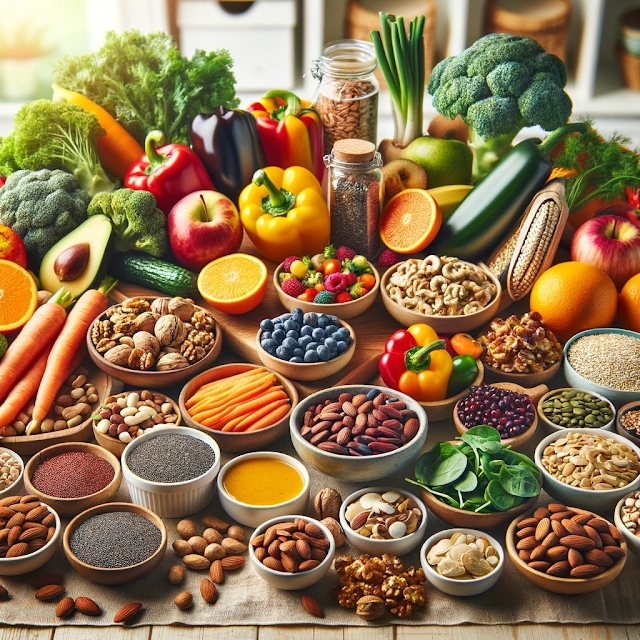Hey there, health enthusiasts! Let's talk about something that might be missing from your diet – fiber. Despite its crucial role in maintaining good health, most Americans aren't getting nearly enough of this powerhouse nutrient. If you're wondering how to up your fiber game, you're in the right place. Here are six easy ways to add more fiber to your diet and boost your overall well-being.
Why Fiber Matters
Fiber is the indigestible part of plants and comes in two main types: soluble and insoluble. Soluble fiber, found in oats, apples, beans, and psyllium husk, dissolves in water and helps manage blood sugar levels and lower cholesterol. Insoluble fiber, found in whole grains, leafy greens, nuts, and seeds, adds bulk to your stool and aids in digestion. Together, these fibers play a vital role in keeping you full, promoting regular bowel movements, and supporting gut health.
The Fiber Gap
According to the Dietary Guidelines for Americans, more than 95% of women and 97% of men are not meeting their daily fiber recommendations. The average American only gets about 58% of the recommended fiber intake. It's time to change that!
How Much Fiber Do You Need?
The guidelines suggest 25 grams of fiber per day for women and 38 grams for men up to age 50. For those over 51, the recommendations are 22 grams for women and 28 grams for men. Your specific needs might vary, especially if you have certain health conditions, so it's always good to check with a healthcare professional.
6 Easy Ways to Add More Fiber to Your Diet
1. Start Your Day with Oatmeal
A cup of cooked oatmeal packs 4 grams of fiber. Boost it further by adding fiber-rich toppings like fruit, nuts, or seeds. This not only increases the fiber content but also adds a variety of nutrients to your meal.
2. Befriend Beans
Canned beans are a budget-friendly fiber superstar. Just half a cup can add 5 to 9 grams of fiber to your diet. They're versatile and can be added to salads, stir-fries, smoothies, and tacos. Try roasted chickpeas or edamame for a crunchy snack, which provide about 5 grams of fiber per ⅓ cup.
3. Opt for Whole Grains
Swap out refined grains for whole grains. Use whole wheat pasta instead of white pasta, or try legume-based pasta. Whole grains retain the entire seed and bran, offering more protein and fiber than refined grains.
4. Try a Meatless Meal
Fiber is abundant in plant-based foods, so incorporate a plant-based meal a few times a week. Think lentil chili, portobello mushroom burgers on whole grain buns, or tofu and broccoli stir-fries with quinoa.
5. Snack on Fruits and Veggies
Use snack time to increase your intake of fresh, canned, or frozen fruits and vegetables. Pineapple with cottage cheese, bell pepper slices with ranch dressing, and apples with peanut butter are great options. Berries like raspberries and blackberries are fiber powerhouses, offering 8 grams of fiber per cup.
6. Drink Your Fiber
If you're struggling to meet your fiber needs, try a lower-sugar prebiotic soda like Olipop, which provides 9 grams of prebiotic fiber per can. It's a tasty and refreshing way to reach your fiber goals.
Tips for Success
Remember to increase your fiber intake gradually to avoid gastrointestinal discomfort. Start by adding about five additional grams daily, and make sure to drink plenty of water to help with digestion. Fiber can make a big difference in how you feel, so take it slow and steady.
Final Thoughts
Fiber might be overlooked, but it's essential for good health. By incorporating these simple tips into your daily routine, you can easily boost your fiber intake and enjoy the numerous health benefits that come with it. So, next time you’re planning your meals, remember to think fiber first!
Disclosure: This post may contain affiliate links, and I could earn a commission at no extra cost to you if you make a purchase through these links. Thanks for supporting our blog and making healthy choices!

